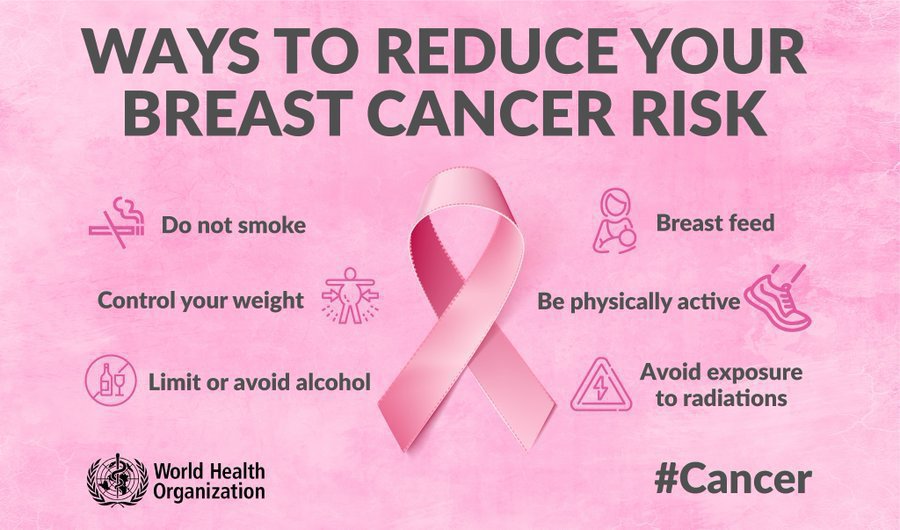19th October: Breast Cancer Awareness Day
19th October is observed as the Breast Cancer Awareness Day worldwide. Breast cancer is the world's most common cancer. It’s a chance to raise awareness about self-examination and early detection. According to the World Health Organization (WHO), over 2.2 million women were diagnosed with the disease in 2020.
Overview of Breast Cancer
Breast cancer arises in the lining cells (epithelium) of the ducts (85%) or lobules (15%) in the glandular tissue of the breast. Initially, the cancerous growth is confined to the duct or lobule (“in situ”) where it generally causes no symptoms and has minimal potential for spread (metastasis). Over time, these in situ (stage 0) cancers may progress and invade the surrounding breast tissue (invasive breast cancer) then spread to the nearby lymph nodes (regional metastasis) or to other organs in the body (distant metastasis). If a woman dies from breast cancer, it is because of widespread metastasis.
Breast cancer treatment can be highly effective, especially when the disease is identified early. Treatment of breast cancer often consists of a combination of surgical removal, radiation therapy and medication (hormonal therapy, chemotherapy and/or targeted biological therapy) to treat the microscopic cancer that has spread from the breast tumor through the blood. Such treatment, which can prevent cancer growth and spread, thereby saves lives.
Ways to Reduce Risks of Breast Cancer
You can follow the following on your part to reduce your risk of getting breast cancer:
Importance of Self-Examination
Apart from these, periodic self-examination should be done, as is helps in early detection of breast cancer. Breast cancer most commonly presents as a painless lump or thickening in the breast. It is important that women finding an abnormal lump in the breast consult a health practitioner without a delay of more than 1-2 months even when there is no pain associated with it. Seeking medical attention at the first sign of a potential symptom allows for more successful treatment.
Here's a video demonstrating the steps of self-examination of breast:

 Listen to this article
Listen to this article
